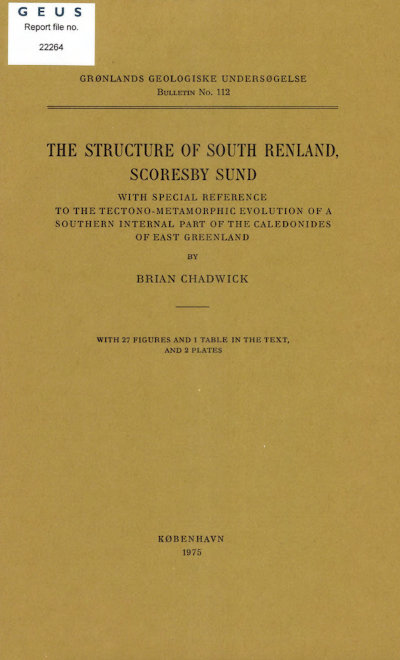The structure of south Renland, Scoresby Sund. With special reference to the tectono-metamorphic evolution of a southern internal part of the Caledonides of East Greenland
DOI:
https://doi.org/10.34194/bullggu.v112.6653Abstract
Renland occupies an internal position within the southern extreme of the outcrop of the Caledonian mobile belt of East Greenland exposed between latitudes 70° and 82° N. In south-west Renland migmatised paragneisses derived from sediments comparable to the late Precambrian Lower Eleonore Bay Group form a multilayered sequence with a minimum thickness of 1500 m. The migmatites are interleaved with thick concordant sheets of garnetiferous augen granite, the formation of which may be linked with the low-pressure granulite or transitional amphibolite-granulite facies conditions attained during migmatisation of the paragneisses. These conditions persisted during the folding together of paragneisses and granites into regional structures of nappe dimensions which had a north or north-west direction of transport. Refolding of the nappes under continued high-grade conditions gave rise to structures locally coaxial with nappe axes. Reversals of facing of nappes occur in backfolds. Linear fabrics of sillimanite and biotite and prolate ellipsoidal augen of feldspar are parallel to fold axes and show that constrictional deformation dominated the later stages of the nappe phase and the refolding event. The constriction is attributed to compressing of rocks in south-west Renland between nappes advancing from the south and a rising mass of granite and basement gneisses in the north. Intrusion of concordant sheets of biotite-rich hypersthene monzonite (mangerite) followed the nappe deformation in south-east Renland. The principal sheet, which is 500 m thick, forms the rim to part of a lopolithic basin. Thinner sheets of monzonite injected into migmatites within the basin have been disrupted by further migmatisation and granitisation. Stable assemblages in pyribolite restite suggest this later event, which was restricted largely to the basin, attained conditions of hornblende-granulite facies. Open warps attributed to monzonite injection and the basin formation are superimposed on nappes west of the principal sheet. Normal faults with downthrow to east and west relate to the formation of troughs filled with Upper Palaeozoic and Mesozoic sediments in the Scoresby Sund region. The distribution of the faults suggests Renland was a horst area in Upper Palaeozoic times. Tertiary igneous activity in south Renland is represented by rare dykes of olivine dolerite and scattered plugs of pyroxenite which locally contain large blocks of host gneisses.
Downloads
Published
Issue
Section
License
This article is distributed under a CC-BY 4.0 licence, permitting free redistribution and reproduction for any purpose, even commercial, provided proper citation of the original work. Author(s) retain copyright over the article contents.


